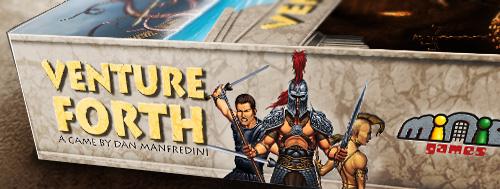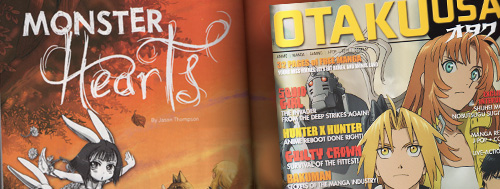Greek mythology: A tried and true lore of ancient heroes, incomparable threats, and completely baffling logic that is the mainstay of our educational culture. But even if Zeus was found wanting of aspirin and birthed goddesses from his forehead in the driest way a textbook knew how, there’s still an ancient power to these myths, a strength derived from thousands of storytellers, each imparting a bit of their own life, and a bit of their own imperfections, as the tales found their way to the modern day. This is truer of nothing than the Greek's epic poetry, and no one has captured the rhythm and lifeblood of an ancient people as Robert Fagles.
I still remember his translation of the Iliad, an old hardback tome, perhaps then new, resting on the coffee table. The cover black, the top of the leaves painted red, if not for all those sturdy souls sent to House of Death, then for a really swell looking book. It was my mother’s, and where Mythology 101 might not have had any love for the Greek gods and goddesses of yore, she imparted a fascination with swift-footed Achilles and his unquellable rage, Lord of Men Agamemnon, Hector, Paris, Helen, and all the tragedies of the war on Troy.
Rage— Goddess, sing of the rage of Perseus’ son Achilles! Lines like this reverberated with me, and it inspired a adoration not just for Greek myth, but of all old epic poetry, from the alliterative Beowolf to the often very redundant Gilgamesh.
But for all its enduring imagery and epic tales, the world of Greek myth feels seldom acknowledged in the world of gaming. Sure, one could dig up that GURPS sourcebook or an aging board game of some nature, but for a mythology ripe with all the tropes we associate with the omnipresent medieval fantasy, it’s a missed opportunity for games both new and familiar.
So when Minion Games head honcho James Mathe first showed me Venture Forth, I was pretty enthusiastic. The bones were there for a game rife with the kind of magic I felt reading the epics, and maybe even such irreverent romps as the 1980s Clash of the Titans. But the prototype itself was bare of theme, a blank slate that could as easily been Tolkien as Homer. Time to crack those knuckles!
As I said, the game symbols used in the prototype given to me were all very generic affairs, with medieval chevron shields and golden trophies. I replaced them with Greek equivalents, sturdy round shields, gleaming gladii, and ancient urns. With proper icons in place, it seemed only fitting to use the most iconic of Greek contributions, the architecture of the period, as my inspiration for the card borders.
 After completing the frames, I started to place the work by James Denton into my card sheets. The art was big and bold, maybe even a little over-the-top at times, which felt perfect for the sort of Greek high-adventure we were talking about. But inside my frames they felt encroached upon, constrained. One does not contain such gods of men and creatures of myth! It was then I decided to make the artwork “pop over” the edges. It made the monsters more daunting, the heroes more adventuresome, and all in all just seemed more exciting. Unfortunately, most of the artwork was provided without layers, so this effect took quite a bit of love and care. Zooming in at 600% helps as you're carefully trimming the art away from its original background. The end “coming out at you” result was worth the time. The tiny cards feel that much bigger for it.
After completing the frames, I started to place the work by James Denton into my card sheets. The art was big and bold, maybe even a little over-the-top at times, which felt perfect for the sort of Greek high-adventure we were talking about. But inside my frames they felt encroached upon, constrained. One does not contain such gods of men and creatures of myth! It was then I decided to make the artwork “pop over” the edges. It made the monsters more daunting, the heroes more adventuresome, and all in all just seemed more exciting. Unfortunately, most of the artwork was provided without layers, so this effect took quite a bit of love and care. Zooming in at 600% helps as you're carefully trimming the art away from its original background. The end “coming out at you” result was worth the time. The tiny cards feel that much bigger for it.For the card backs, I decided to make it stand out from the front art by using traditional “black-figure” imagery from Grecian urns. I drew it myself based on a particular urn featuring god of war Ares and surrounded it with the ornamental details that seemed fitting.
 Venture Forth itself is a great game that takes the things you love about an adventure board game, leaves out the trite, trying stuff you don’t, and wraps it in a golden fleece of Euro-gaming standbys that together feels fresh and new. Helping your party of adventurers meet their fated ambitions instead of just killing monsters leads to a very Greek feeling tale, and the amount of depth provided by cultivating paths, hiring new heroes, and overcoming obstacles just makes for a very complete and satisfying package.
Venture Forth itself is a great game that takes the things you love about an adventure board game, leaves out the trite, trying stuff you don’t, and wraps it in a golden fleece of Euro-gaming standbys that together feels fresh and new. Helping your party of adventurers meet their fated ambitions instead of just killing monsters leads to a very Greek feeling tale, and the amount of depth provided by cultivating paths, hiring new heroes, and overcoming obstacles just makes for a very complete and satisfying package.If that sounds like the kind of game for you, and you lack the ability to pop it fully-formed from your forehead, make Hermes-like haste to MinionGames.com and score yourself a copy. Ordering directly from us means more of your dollar goes to support the people who made the game possible! That, and you'll get this special Treasure Card, not available anywhere else!










